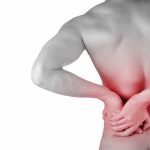There’s a new school of thought emerging that will advance the principles of health and safety integration. Report by Robert Dill.
At a time when many employers are questioning their results and struggling to justify their wellness program costs, there is a growing body of evidence that supports the concept of integrating worker safety and worker health for better outcomes and lower costs. The research is coming from reputable sources like Harvard, National Institute for Occupational Safety and Health (NIOSH) and The Commission on Health and Safety and Workers’ Comp.
There is a nomenclature developing along with the research. We now have terms like total worker health, health promotion, health protection, integrated health and safety (IHS) and population health management (PHM) just to mention a few. Add to this the disruption of the Affordable Care Act for employers and providers, the varying political winds and there is no wonder that the level of uncertainty has become palpable.
As a result, a small number of employers are responding with a different approach in managing human capital health risk within their organizations. They have begun building bridges to the traditional silos of workers’ comp and safety and medical and wellness benefits.
The movement has advanced enough for the Harvard School of Public Health to hold a conference in Boston earlier this year and in the summer of 2014 a conference, sponsored by health and safety provider UL and architecture and construction giant AECOM, brought together experts from government, corporate and not-for-profit, higher education and research organizations. The results of the summit brought forth key factors, which if addressed, would help create a more favorable environment for advancing the principles of health and safety integration.
The efforts of this summit resulted in a May 2015 article in the Journal of Occupational and Environmental Medicine titled ‘Integrating Health and Safety in the Workplace’. In this article the authors identify key factors for:
- Determining why health and safety integration is important and how it should be defined.
- Formulating what should be measured to evaluate the impact of IHS programs.
- Describing how employers can systematically develop and implement IHS programs.
The article said there is not only a need for a better definition of the components that comprise an integrated health and safety program but that a clearer demonstration of the value proposition for IHS is required.
Additionally, a key set of metrics is also needed in order to effectively measure the results of these strategies and determine their value for employers, investors, and policymakers. According to the Journal of Occupational and Environmental Medicine article, a set of practical, scalable, comprehensive guidelines is needed for employers and specifically for their health and safety teams that would give guidance on how to integrate strategic health and safety programs across operational silos.
Historical silos
For several decades US employers have made significant progress in improving worksite safety and health. Since 1970 the incidence of worksite deaths and illness has been reduced by more than 65 per cent. For the most part this has been accomplished through a host of factors including coordination of effort between employers, governmental agencies and organized labor. As the science of safety broadened, incident rates diminished and for the most part industry has been able to successfully create a culture of health
Simultaneously, we have seen the development of workplace wellness programs as one of the responses to the increasing cost of providing medical benefits to employees. Early on, these programs were, for the most part, participation based with mixed results in cost containment and measurable metrics regarding absenteeism, presenteeism and overall return on investment. Safety culture firmly rooted the foundation of a significant wellness culture has remained elusive.
For several decades we have seen the advancement of safety and workplace wellness develop in separate silos and even though they have evolved in tandem in most organizations, they operate separate from one another with different metrics, data sources and organizational reporting structures. The conferences mentioned above were organized in part to recognize and develop an emerging new school of thought, as employers and others in the occupational health community have begun to observe health and safety in a new light. The conference supporters believe their impact in the workplace can be enhanced measurably by more judicious alignment of respective health and safety strategies as opposed to continuing in existing silos. Early evidence of the effectiveness of these emerging programs is promising.
One of the things to come out of the UL/ AECOM conference was the recognition and definition of five elements of IHS. Those essential elements are:
- Planning: develop a rationale for why strategic integration is important and needed.
- Assessment: evaluate the current health and safety status of the organization.
- Implementation: develop and implement a new, integrated strategy and vision.
- Monitoring: create a system for collecting data and for monitoring and evaluating programs during implementation.
- Review: gauge progress periodically and take corrective action as needed.
When one looks at the above essential elements it becomes clear that achieving meaningful integration of safety and health with the many moving parts and traditional silos is no easy task. One of the most powerful tools is technology and when combined with the emerging management philosophy a lot can be achieved.
The development of risk management technology like Sotarea and products from Cardinus, together with a strong commitment from executive management and other stakeholders, means it will be possible to accomplish what needs to be achieved.







